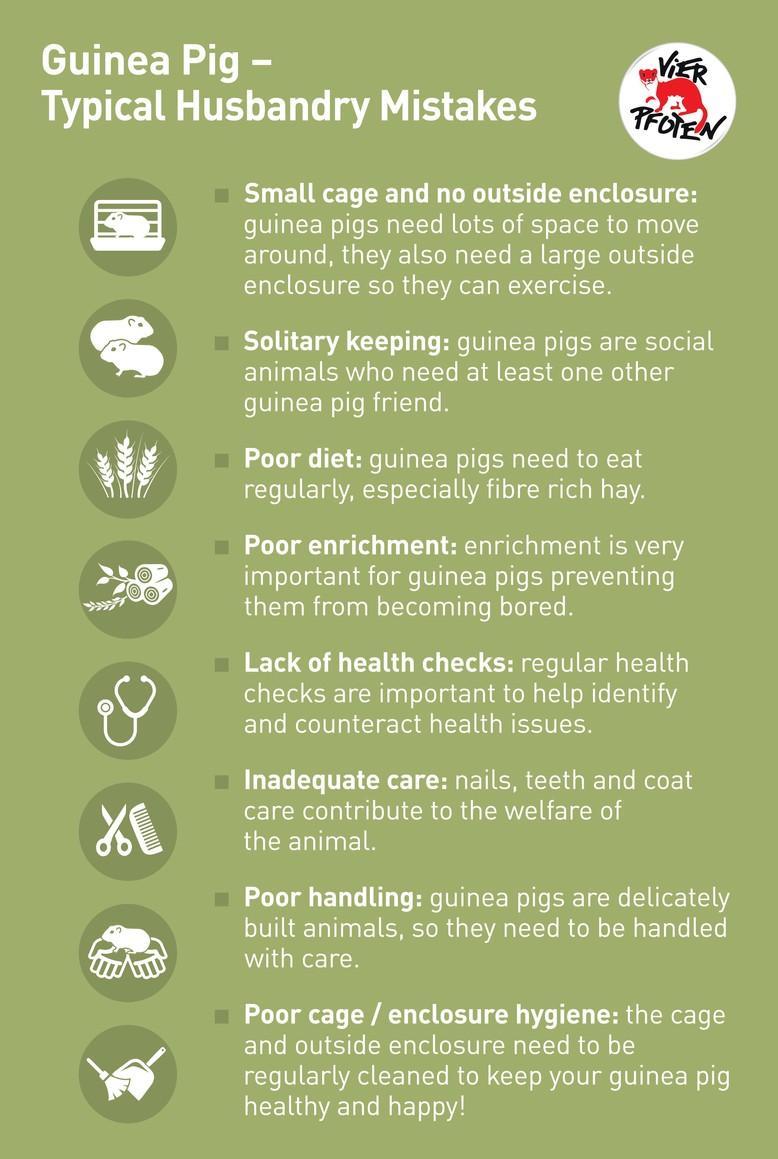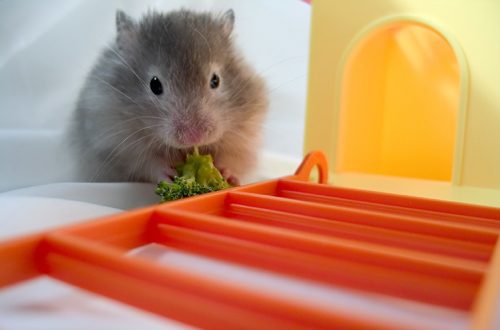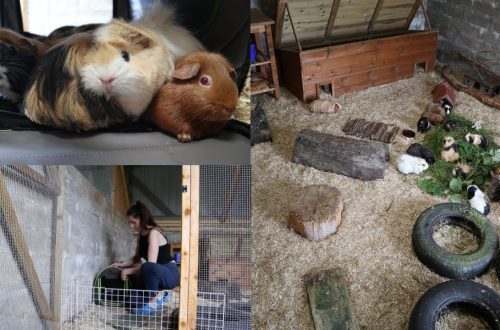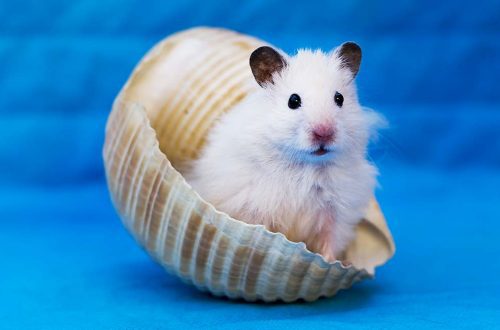
Keeping a guinea pig
Guinea pigs are quite unpretentious, but they still need to create acceptable living conditions.
What is necessary for keeping a guinea pig?
- Comfortable large cage. The height of the cage for a guinea pig should not be less than 40 – 50 cm, the width – at least 40 – 60 cm, the length – more than 80 cm. In such a dwelling, the rodent will be able to stand on its hind legs or climb the house. If you have a couple of animals, the cage should be much larger. Equip the cage with a plastic tray (height 10 – 15 cm) so that you can take it out and put it back at any time. It is great if the cage for 2 guinea pigs is divided into 2 sections: day and night.
- Quarantine cage.
- Transport garden.
- Plastic or wooden nest box (with side opening, no bottom).
- Two feeders (for green fodder and hay), a drinker (the best option is a plastic or glass automatic drinker). It is good if the feeders are ceramic or plastic – it is more convenient to care for them.
- Feed.
- Sawdust or biological bedding.
- Comb for pet grooming.
- Flat stone (for grinding claws).
- Scissors for trimming your guinea pig’s nails.
The cage must be at least 30 cm from the outer wall, at least 40 cm from the heating system and heaters. It is great if it is possible to build an aviary on a balcony or in a garden. Hay, paper or sawdust spreads to the bottom (but do not use sawdust from coniferous trees). A house is placed in the corner of the aviary.
Be sure to place a flower pot, hollow brick or piece of wood in the cage, equip the second floor with stairs or wood knots. But do not get carried away: the cage should not be cluttered up, because the guinea pig needs free space.
The temperature in the room where the guinea pig lives should be maintained within 17 – 20 degrees. Provide regular ventilation so that pets do not experience a lack of oxygen. However, make sure there are no drafts. To keep warm in winter, insulate walls, ceilings and floors, install double frames. High humidity (80 – 85%) and low temperatures are harmful to animals. High humidity impairs the heat transfer of guinea pigs, and a poor balance of temperature and humidity leads to the fact that pets lose their appetite, become lethargic, and their metabolism worsens. All this can be deadly for rodents. Keep in mind that the number of guinea pigs affects the microclimate of their home. If there are a lot of pets, humidity and temperature rise, and the oxygen saturation of the air drops. Overcrowding can also prevent guinea pigs from moving freely and having a good rest, and this, in turn, negatively affects health. Sunlight is extremely important for guinea pigs. Incandescent and gas lamps can replace natural lighting, but do not have the effect of ultraviolet radiation.





